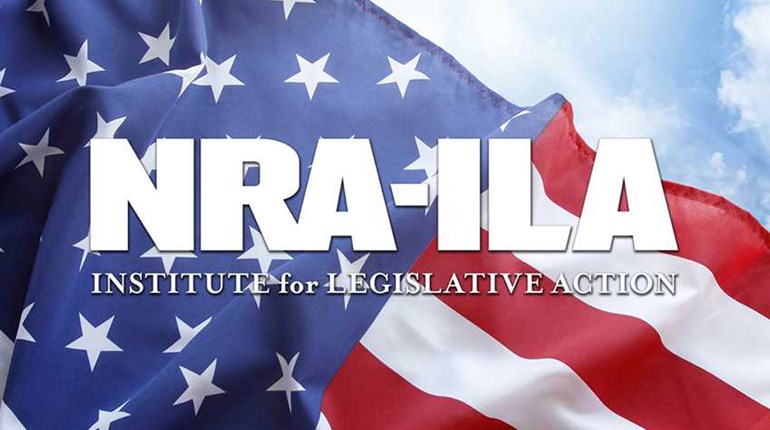
For all the constant hype in the largely anti-gun national media, you’d think so-called “smart” guns were the greatest invention since sliced bread. You might even wonder why you don’t see a nice selection of them on the shelf at your local gun shop.
Of course, those who follow Second Amendment issues closely know that no workable “smart” gun is currently even close to being on the market. And judging by the veritable flop of a “smart” gun that is being widely ballyhooed now, despite its flaws, that’s not going to change anytime soon. … despite the fawning headlines currently making the rounds, the technology currently has a lot of limitations, and certainly isn’t going to “save America” anytime soon.
But first, let me get this out of the way. Despite what gun-ban groups and anti-gun politicians like to say, the National Rifle Association doesn’t oppose technological advances and has never opposed “smart” guns or the ability of consumers to make their own choices. What it doesn’t support—in common with the vast majority of Americans, incidentally—is government mandates that impose expensive and unreliable technology on gun buyers and owners as a matter of law.
Now, back to our regularly scheduled story. The hype from people hoping to get rich on smart gun technology continued at the 2016 International Smart Gun Symposium when San Francisco investor Ron Conway told a teenage inventor, “Congratulations. You are going to save America.”
Conway’s proclamation was premature: Six months later, 19-year-old Kai Kloepfer invited a Wall Street Journal reporter for the first ever firing of his prototype. However, while showing the reporter how he had embedded a fingerprint sensor into the grip of a Glock 22, he pulled some wires loose and had to return to his parents’ garage to solder them back together.
When he returned, the prototype did fire—after a second and a half delay. You see, despite the fawning headlines currently making the rounds, the technology currently has a lot of limitations, and certainly isn’t going to “save America” anytime soon.
Here’s how it “works.” The prototype has a biometric fingerprint sensor, similar to the one in a smartphone, built into the grip and aligned to approximately where the shooter’s middle finger would rest. The prototype takes about a second and a half to recognize a fingerprint and unlock the gun. In order for the gun to continue to be available to fire, the shooter’s finger has to remain aligned with the sensor. The sensor can’t recognize a wet fingerprint (think rain, sweat, blood), and the gun isn’t designed to work for persons with dirty hands or who are wearing gloves (both common outdoor conditions). The modifications to the gun also mean that the magazine capacity is downsized from 15 rounds to nine. All of these raise concerns about the viability of the gun as a useful weapon in a critical self-defense situation.Never mind that current smartphone technology doesn’t even work a lot of the time.
Never mind that current smartphone technology doesn’t even work a lot of the time. A fingerprint ID feature is liable to fail when it is cold outside, or when fingers are sweaty, wet or dirty. Smartphone engineers continue to wrestle with more general performance and safety concerns, like inexplicably exploding phones. And while not having your phone work properly can be a great inconvenience at times, it’s not nearly as much of a problem as a gun that won’t function when needed.
Yet that’s not stopping the media from fawning over Kloepfer’s “invention.” Here’s just a small sampling. The Wall Street Journal: “19-Year-Old Just Built The First Fingerprint-Reading Smart Gun.” KCRW: “How The Teenage ‘Mark Zuckerburg Of Guns’ Created The First Smart Firearm.” The Sun: “Teenage Genius Invents A Skyfall-Style James Bond Gun Which Could SAVE Lives.”
Of course, all of these glowing reports tout the positive aspects of the invention, while speaking little about the long list of limitations that could make owning such a gun a disaster in a critical situation where having a working arm could mean the difference between life and death.
Note that all of this is in no way meant to be critical of Kloepfer, his obvious intelligence or his desire to try to help reduce the number of accidental shootings—a number that, incidentally, has fallen drastically over the past few decades.
Kloepfer is only doing what President Barack Obama—in his seemingly never-ending push for more restrictive gun laws—has said is a top priority. As part of his executive gun-control “fixes,” Obama endorsed so-called “smart” gun technology on the premise that if “you can’t unlock your phone unless you’ve got the right fingerprint, why can’t we do the same thing for our guns?” … with overzealous gun-ban proponents constantly pushing for more and harsher restrictions, is there any doubt they would soon seek to make “smart” guns mandatory?
Despite Obama’s zeal, gun owners have legitimate reasons for viewing “smart” gun technology with reservations. Radio frequency ID (RFID) access or token-access “smart” gun technology—like that in the failed but once highly touted Armatix iP1—also comes with obvious problems.
According to NRA-ILA, one gun-control group, The Law Center to Prevent Gun Violence, recommends the development of “smart” gun technology that, besides preventing unauthorized use, would allow guns to be remotely disabled and their locations GPS-tracked. This capability was echoed in a 2016 Report to the President by the Departments of Justice, Homeland Security and Defense, which noted that technology currently being tested would allow “real-time data collection involving the location and use of law enforcement firearms.”
It’s certainly not hard to imagine how this kind of data collection and tracking technology can be used or abused if it’s incorporated into “smart” guns more generally. Could guns in a certain area simply be “turned off” if it was deemed necessary by the political elite? And what about the possibility of turning off all such “smart” guns permanently, should corrupt government officials decide to do so?
As mentioned earlier, NRA has never opposed the development of so-called “smart” guns, and that’s not our purpose here. But with overzealous gun-ban proponents constantly pushing for more and harsher restrictions, is there any doubt they would soon seek to make “smart” guns mandatory? And then what happens to all of the “not-so-smart” guns owned by millions and millions of law-abiding Americans? It’s not much of a stretch to speculate that once the sale of “smart” guns is mandated, proposals to outlaw the sale and ownership of conventional firearms would come soon afterward.

































